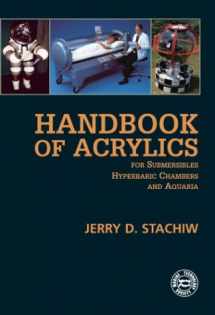
Handbook of Acrylics for Submersibles, Hyperbaric Chambers, and Aquaria
Book details
Summary
Description
"Handbook on Acrylics for Submersibles, Hyperbaric Chambers, and Aquaria" summarizes the theories, test data, and work experience accumulated over the years in the design, fabrication and operation of acrylic plastic viewports in submersibles, hyperbaric chambers, and aquaria. This fully illustrated, 1,080 page handbook solves current practical engineering problems in the design of the pressure resistant acrylic plastic viewports in the entire pressure range from full vacuum to 20,000 psi (138 Mpa).
This fully documented design handbook is ideally suited for engineers, designers, operators, and inspectors of pressure vessels who need to know and understand the technology of viewport and hyperbaric chamber development. In addition, the safety factors recommended for the design, to preclude catastrophic failure, are covered in a separate section of the ANSI/ASME PVHO-1 Safety Standard.
Materials, fabrication processes, distribution of stresses and strains in standard window shapes, critical pressures, bonding techniques, deterioration of acrylic material, and surface finishes are all discussed for the benefit of the designer. The designer, operator and/or inspector is made aware of how to care for acrylic in service and what may harm or even destroy the usefulness of the acrylic. Using the information presented herein allows the engineer to design, fabricate and test numerous acrylic structures that will be safe, economical and long lasting.
This book is a necessary addition to the libraries of designers, fabricators, users and inspectors. With the information included, a sound engineering appraisal can be made and used for safe designs of acrylic windows and pressure vessels.


We would LOVE it if you could help us and other readers by reviewing the book
Book review



